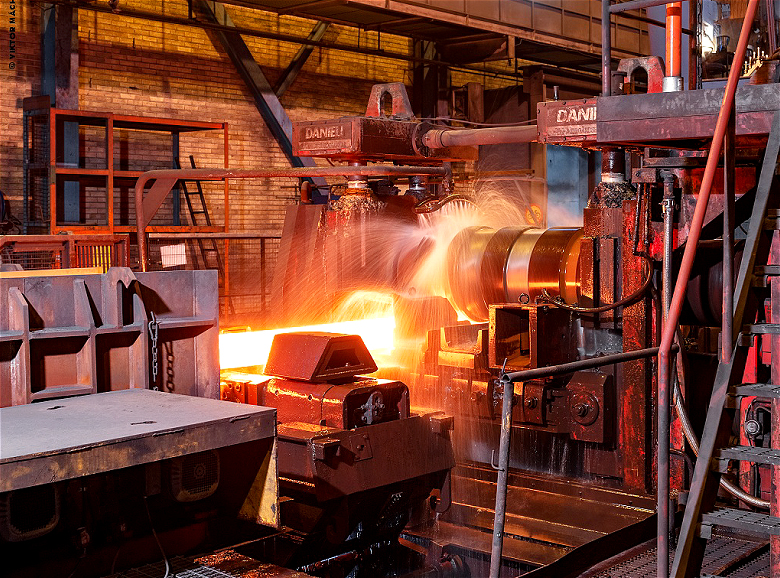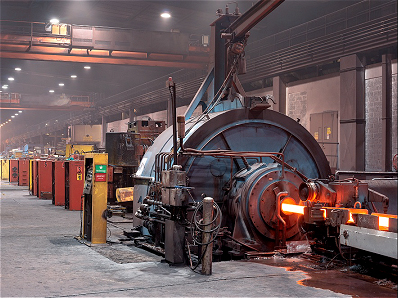
The Planetary Rolling Mill is a rolling mill composed of two support rollers and many small planetary rollers surrounding the circumference of the support rollers. The total rolling reduction rate is very large, up to 90% to 98%. During the rolling process, the rolled piece not only does not cool down but can be heated up by 50°C to 100°C, which is beneficial to the processing of special steels with strict temperature requirements.



The Planetary Rolling Mill is mainly composed of a fixed frame, a sun gear, a moving rotary disk, three rollers arranged at 120°and installed in the disk, a gear transmission mechanism, a central lubrication system, etc.
The Planetary Rolling Mill is driven by the main and auxiliary motors directly or by the speed regulating device at the same time. The small bevel gear of the main motor drives the large bevel gear fixed on the big plate and makes the big plate rotate. Because the three planetary wheels in the big plate engage with the central sun wheel, the roll rotates around the copper tube with the rotation of the big plate; The superimposed drive driven by the auxiliary motor provides an additional rotational drive to the roll to ensure the rotation and progress of the rolled piece.
One of the keys to adjusting the operation of the rolling mill is to adjust the input speed of the main and auxiliary motors. The roll axis and the rolling line form a certain inclination angle. To achieve rolling, the roll axis must be deflected by another angle around the planet wheel axis. The roll axis and the rolling line form two straight lines that intersect in space.
The main advantage of the planetary rolling mill is that the deformation of the metal after one pass is very high. The billet pipes on the planetary rolling mill is compressed each time with a very small section which is not like the normal ordinary rolling mills, and the total deformation of the metal reaches 95%-98%.
Advanced sensors and control systems are used to realize automatic feeding, automatic parameter adjustment, automatic detection and other functions to improve production efficiency and quality.
Customized design according to the actual needs of customers.
The design of planetary rolling mill pays more attention to flexibility. Through modular design, rapid switching of planetary rolling mills of different specifications and models is achieved, improving production flexibility and response speed.
Through data mining and analysis, real-time monitoring of the production process, predictive maintenance and other functions can be realized to improve production reliability and reduce maintenance costs. At the same time, by optimizing structural design and using new materials, we can further reduce energy consumption and reduce environmental pollution.




The Planetary Rolling Mill is one rotary-rolling pipe mill for metal pipe with widely-known technology, which is mainly driven by main and auxiliary motors. During rolling, the main and auxiliary motors drive the rollers installed on the rolling mill rotary body to revolve around the rolling center line, and at the same time, the rollers rotate around their respective axes. During the rolling process, by adjusting the speed of the main and auxiliary motors, the rolled pipes will not rotate after leaving the rolling mill, so that extra-long pipes can be rolled.


| Casting length m |
Casting billet feed rate |
Product specification |
Production capacity |
| ≤25 | ≤1.9 | φ48-φ53x2.4-4.0±0.20 | 4.5 |
*The output will vary according to different materials, feed particle size and other factors
Save Time! Get A Detailed Quotation Quickly.
